Sarah Yarborough
A HORRIFIC DISCOVERY
Natalie Morales: How often do you think about Dec. 14th, 1991, and what happened on that day?
Drew Miller: Quite a bit. It's a very traumatic thing to go through.
It's been over 30 years, but the details of that day have never faded for Drew Miller.
Drew Miller: I had my friend spend the night at my house. We woke up that morning … watched cartoons, ate cereal, left to go skateboarding.
Miller, who was just 13 at the time, lived down the street from Federal Way High School near Seattle, Washington.
Natalie Morales: The school grounds have changed quite a bit, right?
Drew Miller: Drastically, yes … The tennis court is the only thing that's still here.
Miller often took shortcuts through the school to go skateboarding, as he and his friend did that day.
Drew Miller (outside Federal Way High School): We used to hop the fence, right here ... and cut through here (pointing ) ... It was freezing cold that day. There was ice in all of the mud puddles. We just, you know, started smashing them because it's fun ... sounds like breaking glass.
That's when Miller says they noticed a man in the bushes.
Drew Miller: Right where you see the edge of this dugout right here (points) … That was all bushes that were probably this tall (positioning his hand near his shoulders). So, we couldn't see him until he stood up.
Drew Miller: He's just staring at us from the bushes. That was pretty jarring. But then he just walked out of the bushes. So, then we just assumed he was just smoking weed or something.
The mysterious man kept to himself and walked ahead of the boys. Miller says they didn't think much of it until they came across a horrendous scene. There in the bushes, where the man had just been, was the body of a young woman.
Drew Miller: It was horrible. Absolutely horrible. The way that he left her body. … She clearly fought for her life.
Miller says his shock turned to fear when he realized the man, who was still just feet in front of them, was now staring directly back at him.
Natalie Morales: Does that look still haunt you?
Drew Miller: Oh yeah. Yeah … It's frozen in my mind.
Narrator: Natalie Morales and Drew Miller discussed the boogeyman.
The boys hurried to Miller's house and authorities were alerted.
Narrator: Scott Strathy, a detective with the King County Sheriff's Office, described approaching the victim and noticing the name "Sarah" on one of her clothing items.
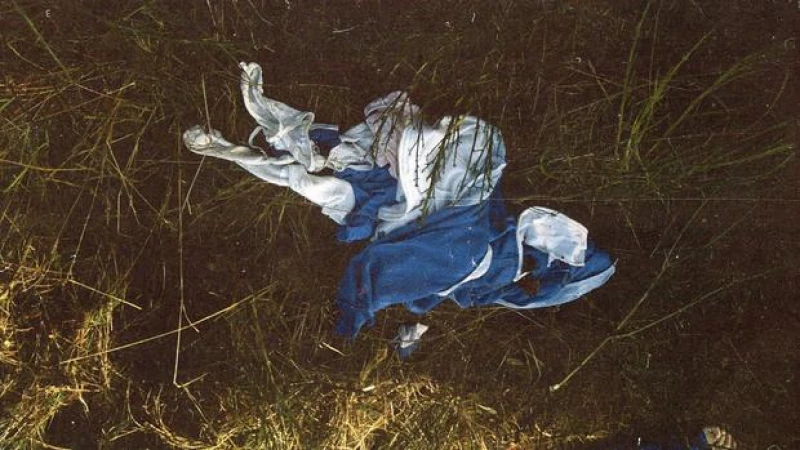
Scott Strathy, one of the first officers at the scene, was a detective with the King County Sheriff's Office.
Narrator: Strathy later revealed that the victim was Sarah Yarborough.
Narrator: Even for seasoned investigators, the sight was extremely difficult to handle. The innocence of the young woman, dressed in her school drill team uniform with hot curlers still in her hair, made it all the more heartbreaking. This was pure and absolute evil.
Authorities believed that this was a murder driven by sexual motives.
Narrator: The victim was partially undressed, with her jacket, undergarments, and bra removed and placed beside her body.
Police discovered that Sarah's car, which she had driven that morning, was parked in the school parking lot, approximately 300 feet away from where her body was found.
Narrator: Detective John Free noted that there didn't appear to be any signs of a struggle inside the car.
Detective John Free with the King County Sheriff's Office Major Crimes Unit would later join the investigation.
Det. John Free: She had a container of orange juice that she had made that morning. It was just sitting in the front seat. Nothing was tipped over. So the question was, how did she get from her car to this hill? What lead her there?
Scott Strathy: Sarah was one of these people that would help anyone with anything at any time. And part of our working theory was, was she coaxed into following, you know, the suspect. Did he say something like – I'm looking for my lost dog or I can't find my car keys? Perhaps Sarah, in an attempt to assist this person, may have followed him to that area.

Natalie Morales: (pointing to photo of Sarah in her drill team uniform): Tell me about this one.
Laura Yarborough: That was less than a week, I think, before she died. I said, "could I take your photo because your Great Grandma really wants a picture of you in your drill team." And she said, "OK."
Laura Yarborough: It was just too incredible to believe that it could even happen.
Laura Yarborough: I mean who thinks that your daughter's gonna be murdered?
Sarah's parents, Tom and Laura Yarborough, had the excruciating task of having to tell their two sons the tragic news. Sarah's youngest brother Andrew was just 11 years old at the time.
Andrew Yarborough: At that age, probably never seen or heard your parents cry much. But that pain in the voice, is very, very vivid.
Sarah, who had just started her junior year in high school, had big plans for her future -- starting with college.
Laura Yarborough: She didn't want to go to a state school. She wanted to go to a school far away (laughs). She loved to travel.
Liberty Barnes: I actually would hear her say … "I can't decide if I wanna be a museum curator or an engineer like my father." … And I was always rooting for the museum curator (laughs).
Liberty Barnes, Kristi Gutierrez, Amy Parodi and Mary Beth Thome were some of Sarah's closest friends.
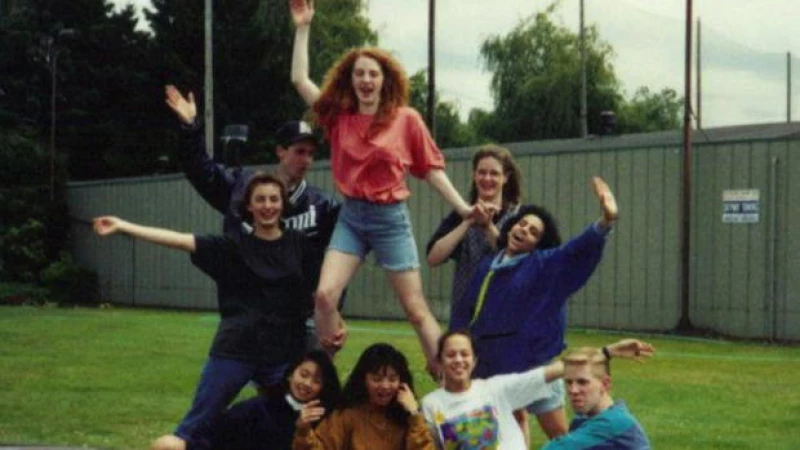
Mary Beth Thome (pointing at the group photo seen above): So, this was after the last day of tenth grade. When we were just kinda goofing around afterwards. And that totally, I mean you can see, there's Sarah right in the middle of it. Just being goofy.
Natalie Morales: The fiery red hair, was that her personality a little bit?
"Yes," Sarah's friends replied in unison.
Amy Parodi: The Artistic, Creative, and Smart Individual
Amy Parodi was known for her artistic talents, creativity, and intelligence. She was also described as feisty and imaginative by Liberty Barnes. Kristi Gutierrez fondly remembers Amy as someone who would always be there with a smile, willing to help with homework. However, tragedy struck when Sarah was taken away from their lives, leaving them with a sense of loss and a shattered feeling of safety.
Amy Parodi reflects on the sudden realization that bad things can actually happen, contrary to the vague possibility that parents often warn about. The Sheriff's Office dedicated all their resources to solve the case as quickly as possible.
The Killer's DNA as Crucial Evidence
The killer did not rape Sarah, but his DNA was found on pieces of her clothing. Detective John Free explains that semen was discovered on her underwear and jacket, providing a full male DNA profile. In 1991, DNA technology was still relatively new, but investigators held onto the hope that it would eventually lead them to Sarah's killer. In the meantime, they relied on eyewitness testimonies.
Drew Miller: I thought for sure somebody would know him.
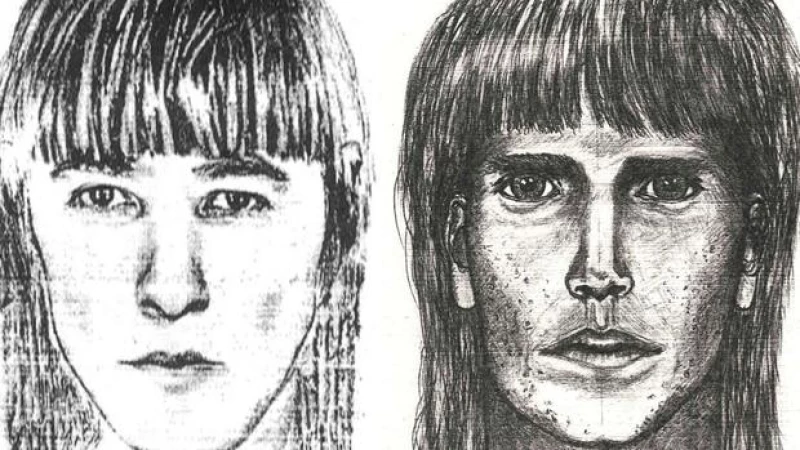
Miller and his friend who was with him the morning they found Sarah's body, worked with police and a sketch of the man they saw in the bushes was released to the public. Police would later release a more elaborate sketch.
Kristi Guiterrez: I very vividly remember going through yearbooks. Going, "OK, who looks like the sketch?" Everyone ... it felt like at one point was, was a suspect.
But as days went by and as leads dried up, police kept coming back to Drew and his friend.
Drew Miller: They just made me feel like I was the only person that could help them solve this. … I know that wasn't their intent. I know the officers were just doing their best.
Natalie Morales: How much pressure were you feeling?
Drew Miller: It's unimaginable pressure.
And despite everyone's best efforts, it would take years to find Sarah's killer.
Scott Strathy: This case was never forgotten.
IN SEARCH OF A DNA MATCH
In early June of 1993, a year-and-a-half after Sarah Yarborough's murder, local media were there as students gathered in the courtyard of Federal Way High School to honor her.
Bill Fuller: The day was filled with emotions. Many tears were shed as people looked at the memorial bench. When you looked at it, you could see Sarah in that bench.
Bill Fuller has been a close family friend of the Yarboroughs for many years. His daughter was even in the same class as Sarah.
Bill Fuller: Sarah … she was a joy to be around … what we miss the most is her infectious joy and laughter.
The bench is engraved with the words "Carpe Diem" which means "Seize the day" - a motto that Sarah lived by. Inside the bronze casing, there are some of her favorite belongings - her ballet shoes, a replica of her beloved dog "Gibby", and some books.
KIRO-TV NEWS REPORT (1993): Andrew Yarborough: It's comforting to know that people cared so deeply for her.
Andrew Yarborough, who is now an adult, admits that he struggled as a young teenager. It was especially difficult for him to see the sketches of the man who the police believed murdered his sister, displayed all over town.
Andrew Yarborough: There were drawings of the person's face everywhere - in businesses and towns. I remember that constant reminder vividly.
Tom and Laura Yarborough: Reflecting on the past, we realize that we didn't do a very good job supporting our sons during their time of grief. We were so consumed by our own sorrow that we didn't take the time to help them.
Laura Yarborough: We didn't have the experience or knowledge on how to navigate grief ourselves, let alone guide our sons through it.
And they weren't the only ones grieving. Shannon Grant, Sarah's last friend to see her alive, also carries constant regret.
Shannon Grant: I wish I could go back and do things differently. Maybe I could have asked the other drill team members about practice time and even dropped her off. There are so many "what ifs."
The milestones were particularly difficult.
Liberty Barnes: Survivor guilt was overwhelming. Why am I filling out college applications when Sarah wanted to go to college? It just doesn't seem fair.
Mary Beth Thome: Every happy occasion was tinged with sorrow. There was always one missing from the group.
On June 12, 1993, graduation day, the emotions were heightened as it also coincided with what would have been Sarah's 18th birthday. Laura Yarborough attended to show her support for her daughter's friends.
Liberty Barnes: I don't know where she found the strength to do that.
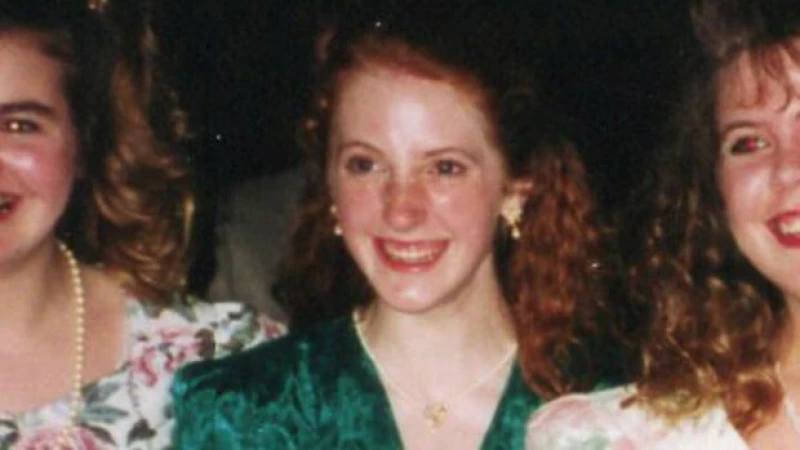
"Well, I'm gonna date this person and I just wanted to let you know cause I wasn't sure if Sarah would approve of this person" (laughs).
So, they would seek approval through you. You became sort of their surrogate.
As life slowly moved forward, investigators kept working the case.
I describe it as a relay race where the baton was handed off from one detective to the next over the years and decades. … I kind of refer to myself as the fifth Beatle in this investigation.
By the early 2000s, investigators had received over 3,000 leads. And advances in technology made them hopeful. They entered the DNA from the crime scene into the recently established CODIS system – a national DNA database that includes profiles of convicted offenders.
The strategy was to continually try to see if there would ever be a match … while also investigating leads.
But over time there appeared to be no match.
Det. Jane Smith: It was baffling to have DNA evidence from the suspect and yet not be able to match it to anyone in the system. It seemed implausible that the suspect had never committed any previous crimes that would have his DNA on record.
That's when investigators realized they needed to take a different approach.
Dr. Michael Johnson: My name is Dr. Michael Johnson and I am a leading expert in forensic genetic genealogy.
In 2011, authorities contacted Dr. Johnson to explore the use of forensic genetic genealogy - a technique that involves comparing unknown DNA profiles to public DNA databases and searching family trees to identify potential suspects. While genetic genealogy is now widely recognized and has helped solve numerous cold cases, it was still in its early stages at that time.
Dr. Michael Johnson: When I first entered this field, it was virtually non-existent.
Dr. Johnson explains that most law enforcement agencies were initially skeptical of this new investigative tool.
Dr. Michael Johnson: The police were hesitant and thought my ideas were far-fetched. They couldn't believe that a simple idea could be so effective. I was even ridiculed during some meetings...
However, the local police department decided to take a chance on Dr. Johnson.
Dr. Michael Johnson: It was a pro bono project. I just wanted to test its effectiveness. What's the harm in trying something new?
The Yarboroughs felt hopeful about this new approach.
Unexpected Breakthrough in Sarah's Murder Case
Tom Yarborough, a close friend of Sarah, recently revealed that the investigation into her murder took a surprising turn when they enlisted the help of Colleen Fitzpatrick, a forensic genetic genealogist. Fitzpatrick was able to trace the killer's family tree back to a man named Robert Fuller, who had ancestors that arrived in America on the Mayflower.
When Fitzpatrick shared this information with the King County Sheriff's Office, they immediately thought of Bill Fuller, a close family friend of the Yarboroughs who had helped build a memorial bench for Sarah. Detectives were initially skeptical of Fuller's involvement, as he did not match the physical description of the suspect. However, they decided to further investigate his connection to the case.
Det. John Free, who is leading the investigation, stated that the discovery of Fuller's potential connection to the case has piqued their interest. Sarah's family and friends have always believed in Fuller's innocence, citing his physical appearance as a major factor. Laura Yarborough, Sarah's sister, mentioned that Fuller did not match the suspect's description in terms of hair color and height.
Fuller's age didn't match the profile either. He's 79 years old now but was 48 years old at the time of Sarah's murder -- at least two decades older than the man Drew Miller described.
Bill Fuller: There was no way that I could be even remotely connected to this case.
He fully cooperated with police and voluntarily gave them a DNA sample. It didn't match the DNA found at Sarah's crime scene, yet Fitzpatrick remained optimistic.
Colleen Fitzpatrick: The good news is that we came up with a possible last name to investigate and this was the first break in the case in 20 years.
Fitzpatrick knew that Sarah's killer was in the Fuller family tree somewhere, so she and her team went back to work. And as the years went by she knew she was only getting closer -- especially after 2018 when forensic genetic genealogy was used to identify the Golden State Killer.
Colleen Fitzpatrick: The Golden State Killer really started the big revolution.
Colleen Fitzpatrick: … things had evolved that we had the data to work with. The technology was in place that we could go for it.
Then, in September 2019, Fitzpatrick's team made a breakthrough. They came up with two new possible suspects: brothers Edward and Patrick Nicholas, who, as the DNA showed, were distant cousins of Bill Fuller.
Colleen Fitzpatrick: A Decade of Persistence Pays Off
After eight years of relentless pursuit, Colleen Fitzpatrick, a dedicated investigator, has finally achieved a breakthrough. "This is it. This is exciting," she exclaimed with a sense of triumph.
Working alongside Detective John Free, Fitzpatrick was determined to solve a cold case that had haunted her for years. Their investigation led them to Edward Nicholas, a registered sex offender whose DNA was in the system. However, it turned out that Edward was not the culprit they were looking for.
Undeterred, the duo shifted their focus to Edward's brother, Patrick Nicholas, who lived a few towns away from Federal Way. In 2019, Patrick was a divorced loner with no close relationships or visitors. He led a solitary life, relying on public transportation for his daily commute.
As Detective Free delved deeper into Patrick's routine, he discovered a crucial piece of information. On the day of the murder, Patrick's regular bus route passed by Federal Way High School. At the time, he closely resembled the description provided by witnesses and the composite sketch.
Excited by this lead, Detective Free knew they needed concrete evidence to link Patrick to the crime. In late September 2019, they devised a plan to obtain a surreptitious DNA sample.
Undercover detectives were assigned to conduct surveillance on Patrick Nicholas, hoping to collect the crucial DNA evidence they needed for a match. The operation was a risky endeavor, but the team was determined to bring closure to the case.
Eventually, undercover detectives followed Nicholas to a laundromat.
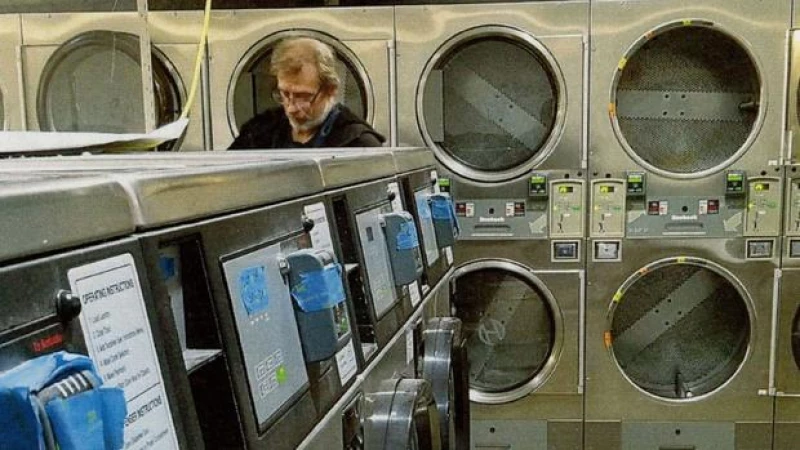
Det. John Free: They saw him go outside and smoke a cigarette. … And Patrick Nicholas was seen throwing the cigarette butt on the ground that was collected by our detectives.
Natalie Morales: That's what you needed.
Det. John Free: Yes.
Natalie Morales: Right there, that cigarette butt.
Det. John Free: Yes. Actually he dropped two cigarette butts and a napkin that fell out of his pocket and all three items were collected.
The DNA samples were rushed to the crime lab and within days detectives received the call they had been waiting for.
Det. John Free: The DNA matched. This was our suspect.
Natalie Morales: Perfect match?
Det. John Free: Yes.
Patrick Nicholas was arrested.
Natalie Morales: There were so many suspects over the years, was Patrick Leon Nicholas ever named a suspect?
Det. John Free: Out of 4,000 tips. He was never named.
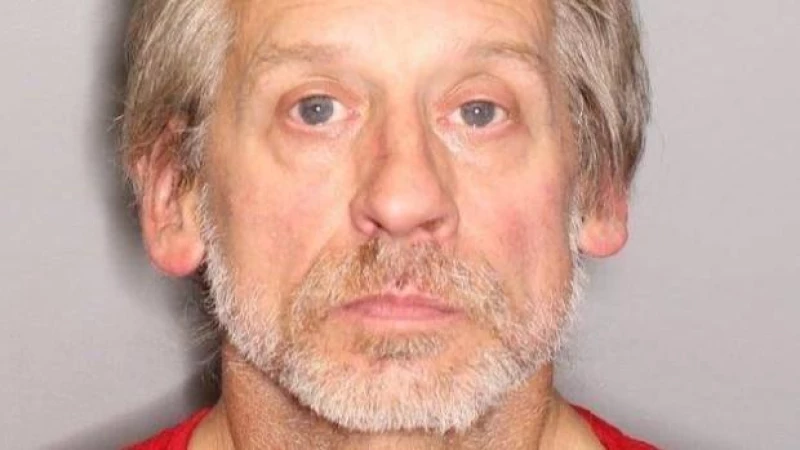
Andrew Yarborough: I was, I was pretty in shock.
The news was a relief for Sarah's family and friends who had never given up hope that they would get answers.
Laura Yarborough: One thing the detectives kept telling us was … eventually technology's gonna solve this case. … I trusted that, and they turned out that they were right.
Kristi Gutierrez: Finally, they got him
After years of searching, the killer of Sarah Yarborough has been found. Drew Miller, who had seen the killer in 1991, immediately recognized Patrick Nicholas when he saw his face. "The same guy, just older," Miller said. "Evil eyes. Those evil eyes stayed the same." When asked if he was sure after all these years, Miller replied, "Yeah."
Interrogation Raises Concerns
However, the case is far from over. During his interrogation, Patrick Nicholas seemed unaware of why he was being questioned. When detectives specifically mentioned Sarah's murder, Nicholas asked, "What year?" Detective John Free found this question concerning, wondering if Nicholas may have other victims. Nicholas remained silent and refused to say anything further.
After an hour and a half, Nicholas asked for an attorney and stopped talking. But his criminal record would speak volumes.
Anne Croney: I am the one that got away.
A CRIMINAL PATTERN OF BEHAVIOR
On a quiet morning in June 1983, eight years before Sarah's murder, 21-year-old Anne Croney was sitting by her car along the Columbia River in Richland, Washington, when a man approached her.
Anne Croney: He seemed normal. … kind of friendly, actually, just friendly … I had asked him if he'd done any water skiing yet because he said he had just moved to town and he said he couldn't swim. … And he said, "my name is Pat Nicholas."
After a few minutes of small talk, she became uncomfortable.
Anne Croney: I noticed his voice was getting shaky and I told him I had to go. … I went to close the door and he put a knife to my throat. … Everything kind of stopped at that moment. … He told me to take my clothes off.
Nicholas stuffed Croney's underwear into her mouth to prevent her from screaming, forced her out of the car, and led her to the riverbank.
Natalie Morales: A Brave Escape
Anne Croney: I ran for my life.
Passersby found Croney at a dock nearby and called police. As it turns out, 19-year-old Patrick Nicholas was no stranger to law enforcement and had a record. He had committed heinous crimes against women in the past.
Anne Croney: He had a history of sexual assault as a juvenile and had recently been released when he attacked me.
Days after Croney's attack, he was apprehended, arrested, and pleaded guilty to his crimes. During his sentencing, Croney spoke up.
Anne Croney: I was furious and requested the maximum sentence from the judge, who agreed and sentenced him to 10 years. I believed justice had been served.
However, Patrick Nicholas did not serve his full sentence. Shockingly, he was released after only three-and-a-half years, without any notification to Croney. She pushed the incident to the back of her mind, until October 2019.
Anne Croney's Shocking Encounter with a Cold Case Murderer
Anne Croney was in for a terrifying surprise when the police knocked on her door. They informed her that detectives in Seattle wanted to speak with her about a cold case. Little did she know, the case involved the man she had escaped from years ago.
Croney was told that Patrick Nicholas, the man she had once been involved with, had been arrested again, this time for the murder of Sarah Yarborough. The police revealed that there were similarities between the cases, leaving Croney devastated. She had never imagined that the man she had managed to get away from was a murderer.
What made the situation even more infuriating was the fact that if Nicholas had served his full prison sentence, he would have still been behind bars when Sarah Yarborough was killed in December 1991. Croney expressed her anger at the system for failing to keep him incarcerated.
According to King County deputy prosecuting attorneys Celia Lee and Mary Barbosa, Nicholas is described as a serial predator with a clear pattern. All of his victims were approached at or near their cars. He would strike up a conversation, then pull out a knife and force them to walk to a secluded area. There, he would order them to undress and proceed to rape them.
Nicholas had a previous conviction for sexually assaulting a minor in 1994, three years after Sarah's murder. There were five other known sexual assaults, but none of them required him to submit his DNA, so there was no record of him in the CODIS database. However, the judge ruled that Nicholas' criminal history could not be used as evidence during the pre-trial hearings, deeming it unfairly prejudicial to the defendant.
Despite this setback, the prosecutors remained hopeful that their case was strong enough. In early 2023, Sarah Yarborough's accused killer, now 59 years old, finally went on trial, more than 30 years after the murder. Sarah's childhood friends, including Kristi Gutierrez and Liberty Barnes, were present to support her memory.
Kristi Gutierrez recalled the morning before the trial started, feeling a mix of emotions and uncertainty, but ultimately deciding to be there for Sarah. Liberty Barnes also expressed the strong love and support they all felt for Sarah and the Yarboroughs.
Natalie Morales asked if they felt like a lifeline, to which Laura Yarborough, Sarah's sister, replied that they were all in it together, providing each other with support.
During the trial, the focus was on the DNA evidence. The prosecutors aimed to build trust in the science behind forensic genetic genealogy.
Mary Barbosa, one of the prosecutors, explained that their strategy was to convince the jury to trust the emerging field of forensic genetic genealogy.
Celia Lee, a character in the courtroom drama, mentioned the emergence of forensic genetic genealogy as a field of study.
Patrick Nicholas's public defender, David Montes, challenged how forensic genetic genealogy was used to first identify Nicholas -- the first time that kind of defense had been used in Washington State.
DAVID MONTES (in court): I want to dig into the science …
DAVID MONTES (in court): They used technology that was not only unproven, but just wacky really …
DAVID MONTES (in court): He's not the person that killed Sarah Yarborough. … the police … needed an answer more than they needed the right answer … And, so, they turned to new novel, untested technology.
David Montes: Genetic genealogy is a new field … it really hasn't been tested out … should we be making important decisions based on something that is not well or deeply understood?
But the prosecutors said that argument was moot because Patrick Nicholas' DNA matched the DNA found at the Yarborough crime scene. And Detective Free says the numbers were astronomical.
Det. John Free: The odds were 1-in-120 quadrillion –
Natalie Morales: Quadrillion –
Det. John Free: Right. That it was somebody else.
If the numbers pointed to Nicholas' guilt, law enforcement says so did evidence found at his house near the time of his arrest in 2019.
Det. John Free: The house was almost like a lair, with no working electricity and stacks of pornography scattered throughout. We also discovered a newspaper from 1994 featuring an article about the Sarah Yarborough case. In one of the kitchen drawers, we stumbled upon a torn photograph of a woman in a cheerleading outfit, taken from a magazine.
Liberty Barnes: When the prosecutors presented that photo in the courtroom, it had a powerful impact on everyone present.
Montes downplayed the significance of these findings.
David Montes: Given the general state of his house, both those pieces of evidence were not particularly strange. His house was filled with stacks and stacks of newspapers.
Patrick Nicholas remained stoic as the evidence was shown, showing no emotion throughout the trial. However, Sarah Yarborough's presence was strongly felt, especially when now-retired Capt. Scott Strathy carefully unpackaged and displayed her clothing that had been in storage for over 30 years: her drill team jacket, shoes, sweater, and even her nylon stockings.
Det. Scott Strathy: It was like opening a time capsule.
Amy Parodi: Suddenly, these were real things. They weren't just photographs, but the actual items she had on her body when she died. It was a crushing feeling.
After nine long days of testimony, the case was handed over to the jury. They reached a verdict in just over a day.
Mary Beth Thome: I was trembling with adrenaline and anticipation.
Kristi Gutierrez: Everything just came crashing down. It was like, "What?"
SARAH'S LEGACY
Sarah Yarborough's loved ones had waited over 30 years for this moment, but then -- shock.
"… not guilty of the crime of murder in the first degree, premeditated …"
Patrick Nicholas was found not guilty of the first charge: premeditated first degree murder.
Shannon Grant: I remember dropping my head to my hands … I was angry. I was in disbelief.
Amy Parodi: When that first one came in not guilty, I closed my eyes.
But there were other charges, and there was still hope of a conviction.
"… Guilty of the crime of murder in the 1st degree"… "guilty … in the second degree ..."
Patrick Nicholas was found guilty of first-degree murder and second-degree murder. The jury ruled both had been committed with a sexual motivation.
Celia Lee: I remember hearing the family behind me cry. … And I made eye contact with the jurors and nodded at them, you know, they got it. They got it, right.
Liberty Barnes: I feel so grateful for those detectives. For the boys, for the previous victims, for every witness who took the stand … so grateful that all these people came together.
It was two weeks after Nicholas' conviction that a group of individuals involved in every aspect of Sarah's case gathered once again at the courthouse. This time, it was for Nicholas' sentencing hearing. The prosecution urged the judge to impose additional time to account for all of Nicholas' crimes.
Anonymous Writer: The sentencing hearing was an unexpected source of exhilaration. It showcased a level of raw human courage that I had never witnessed before.
One by one, people took the stand to express the impact Nicholas had on their lives.
Anonymous Writer: The pain in my father's voice when he called to tell me Sarah was dead...
Anonymous Writer: Coming face-to-face with pure evil that day has forever changed me...
Anonymous Writer: He not only took her life, but also the potential for a bright future...
Anonymous Writer: Patrick Nicholas is pure evil.
Anonymous Writer: Finally, they had the opportunity to confront Patrick Nicholas and say everything they had been wanting to say for the past 30 years. The room was filled with an electrifying power.
And then Anne Croney, who was previously not allowed to testify at Sarah's trial, took the floor.
Anonymous Writer: He seemed taken aback and shuddered when Anne stood up.
Natalie Morales: Like he saw a ghost?
Liberty Barnes: Yes.
Anne Croney: I'm sure he didn't expect to ever see my face or hear my name ever again.
ANNE CRONEY (in court): We rely on a system of justice that is designed to protect us from predators like Nicholas. And this system failed me. It failed Sarah, her family, friends, and countless others … I ask the court to please not make the same mistake.
After everyone spoke, Judge Josephine Wiggs addressed the court.
JUDGE JOSEPHINE WIGGS (in court): When I think about this poor child. This poor child. And what she experienced, fighting for her life.
Mary Beth Thome: Wiggs put her fist on the thing and said, "this was a child. … she kept saying that. And all I could think was -- that's right. We were children.
Nicholas received a sentence of almost 46 years. For Sarah's family and friends, the sentence brought mixed emotions.
Mary Beth Thome: I don't know that this is justice. It is a verdict, and it is putting someone away for something that they did, but he got 30 years … that she didn't get.
Laura Yarborough: It makes me mad that he was free for so many years/ and who knows how many other people were hurt during that time. I -- I don't know that we'll ever know. And that could have been avoided.
Forensic genetic genealogy helped solve Sarah's case, but prosecutors say similar technology could have identified Patrick Nicholas years earlier if only familial DNA searches were allowed in Washington State. In a familial DNA search, an unknown DNA sample is compared against profiles already in CODIS to search for possible family members. Patrick Nicholas' brother had been in CODIS for years.
Mary Barbosa: The legislation just doesn't exist in this state to allow that search …
Natalie Morales: California uses it. The UK, as I understand has --
Celia Lee: New York, Wisconsin, Minnesota, Colorado, Florida …
Natalie Morales: Do you think it's time to get that law changed?
Mary Barbosa: We do.
Celia Lee: We do.
The Yarboroughs agree and hope that Sarah's case can make a difference.
Laura Yarborough: I would like to know that other parents don't have to wait 30 years. …
Natalie Morales: What do you hope her legacy is?
Laura Yarborough: Well … I think her legacy is she was always someone who brought people together … she's brought all the people together that attended the trial … that's the kind of person she was.
For an individual named Drew Miller, who encountered Sarah's body at the age of 13, the connections established during the trial have finally brought him a sense of peace.
Drew Miller: The fact that he is now imprisoned is absolutely fantastic. However, what truly matters to me is the opportunity to know her family and friends, as they have provided me with the actual healing that I needed.
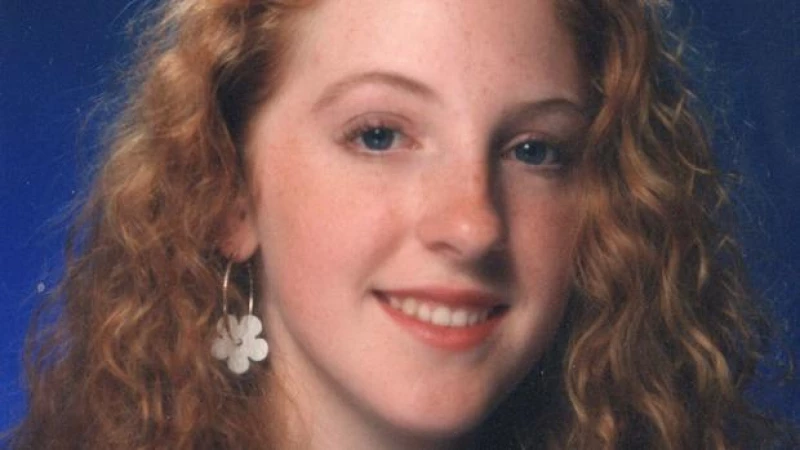
Sarah's friends will forever be connected through the past and the stolen future of Sarah.
Kristi Gutierrez: Not only was she physically beautiful, but her soul was also beautiful... the grace and beauty that she possessed and left with all of us. We will never forget her.
While investigators have not linked Patrick Nicholas to any additional crimes, his DNA has been added to the CODIS database.
Produced by Chris Young Ritzen and Lauren Clark. Greg Fisher is the development producer. Michael Loftus is the associate producer. Gary Winter, Joan Adelman, and Doreen Schechter are the editors. Lourdes Aguiar is the senior producer. Nancy Kramer is the executive editor. Judy Tygard is the executive producer.







